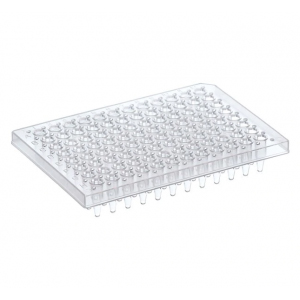What is a PCR plate?
The PCR plate is a kind of primer, dNTP, Taq DNA polymerase, Mg, template nucleic acid, buffer and other carriers involved in the amplification reaction in Polymerase Chain Reaction (PCR).
1. Use of PCR plate
It is widely used in the fields of genetics, biochemistry, immunity, medicine, etc., not only in basic research such as gene isolation, cloning and nucleic acid sequence analysis, but also in the diagnosis of diseases or any place where there is DNA and RNA. It is a one-time consumable in the laboratory. Product.
 2.96 Well PCR Plate material
2.96 Well PCR Plate material
Its own material is mainly polypropylene (PP) nowadays, so that it can better adapt to repeated high and low temperature settings in the PCR reaction process, and can achieve high temperature and high pressure sterilization. In order to achieve high-throughput operation in conjunction with a row gun, PCR machine, etc., 96-well or 384-well PCR plates are more commonly used. The plate shape conforms to the SBS international standard, and in order to adapt to the PCR machines of different manufacturers, it can be divided into four design modes: no skirt, half skirt, raised skirt and full skirt according to the skirt design.
3. The main color of the PCR plate
Common ones are transparent and white, among which white PCR plates are more suitable for new real-time fluorescent quantitative PCR.
Post time: May-14-2021

